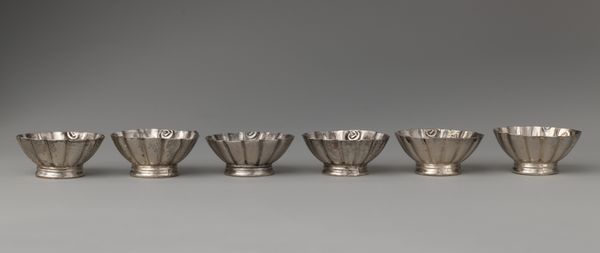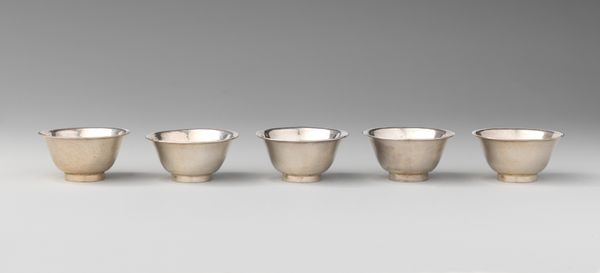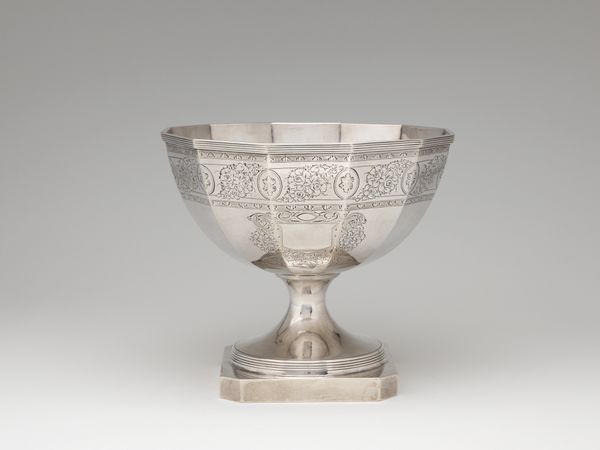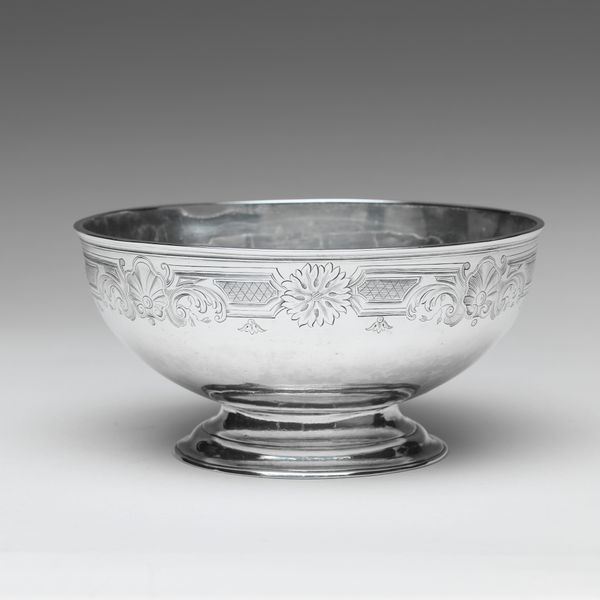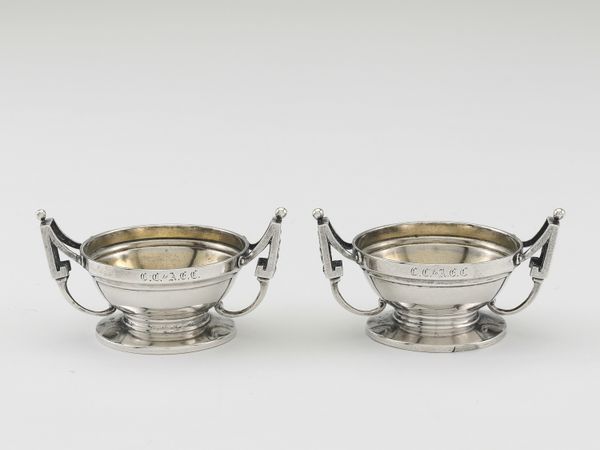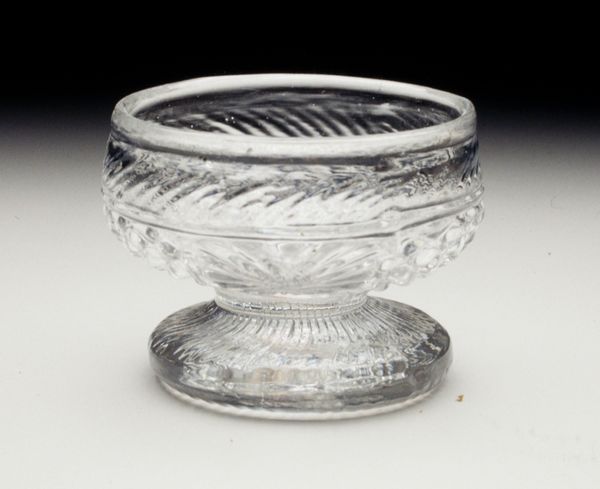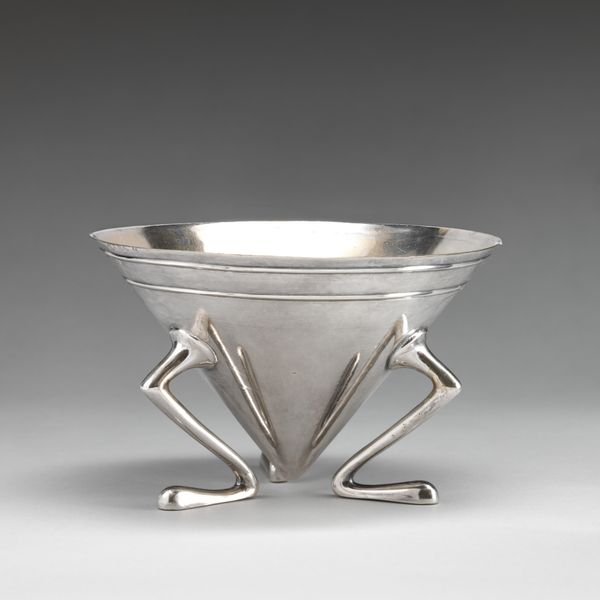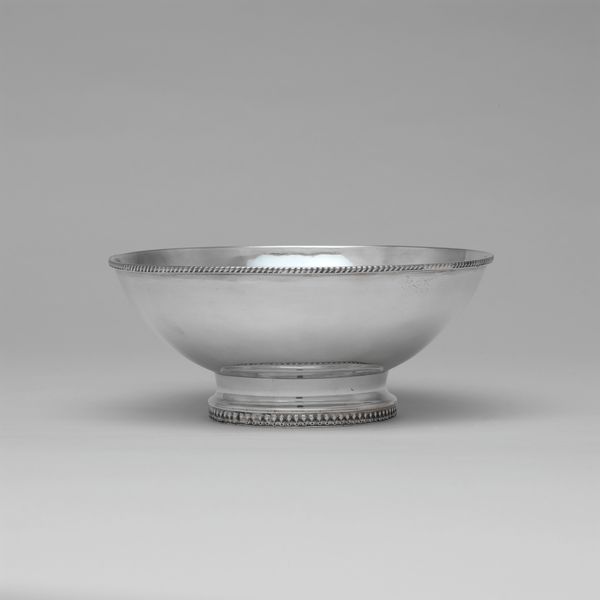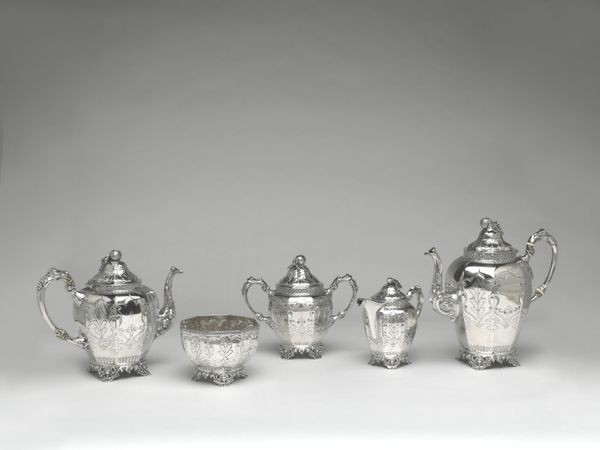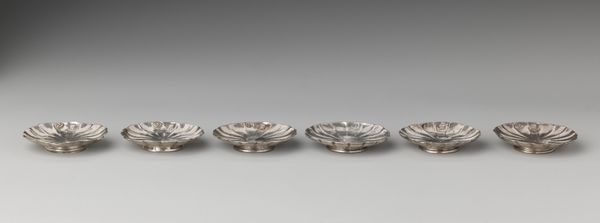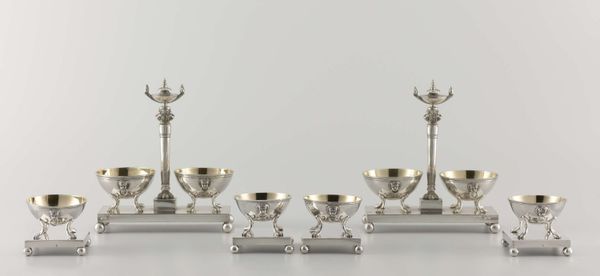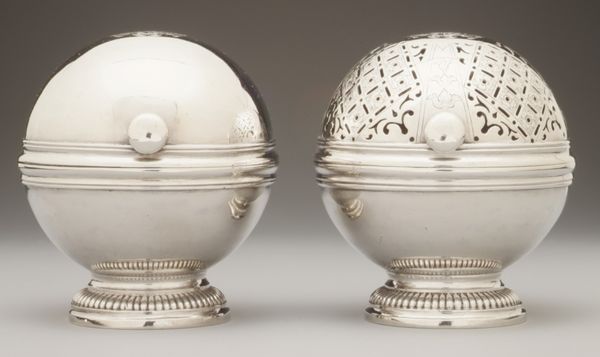
photography, glass
#
photography
#
glass
Dimensions: 4 1/4 x 2 3/8 x 2 3/8 in. (10.8 x 6.03 x 6.03 cm)
Copyright: Public Domain
Editor: So, here we have a photo of a grouping of "Sherry Glasses" made around 1830, made of glass and it is from the Minneapolis Institute of Art's collection. The glasses, with their cut-glass bases, strike me as incredibly ornate, almost suggesting a specific social ritual. What stands out to you? Curator: What I find compelling is not only the ornate aesthetic but what its production tells us about society at the time. These weren't mass produced, plastic items. The creation of such cut glass required skilled labor, specific tools, and specialized workshops. How do you think the existence of such specialized craft and the cost involved impacted who could access these objects, and the act of drinking sherry itself? Editor: Well, obviously, it was not cheap to commission handcrafted pieces. But what is the purpose of such complex shapes on functional glassware? Curator: The geometric cut glass reflects an interesting interplay of functionality and status. Beyond simple utility, they signify a burgeoning consumer culture where even daily use items could serve to denote refinement. Now, what can we deduce about the division of labor inherent in glass production? Did one artisan design, blow, and cut the glass, or were these processes divided? Editor: That's a great question. Given the complexity of the cutting, it feels more likely that it would involve division of labor, possibly a hierarchy of skills involved in blowing and finishing the glass. That would allow for specialization and perhaps increased output? Curator: Precisely. And such division could be quite stratified. So, in looking at these objects, we’re not just seeing glasses; we're seeing the residue of socio-economic relationships. Do you think that understanding that affects how we see their beauty or value? Editor: Absolutely. Recognizing the labor transforms these objects into a tangible representation of 19th-century society. Thanks, this has been fascinating. Curator: My pleasure. Reflecting on craft and consumption adds such depth to appreciating these items, don’t you think?
Comments
No comments
Be the first to comment and join the conversation on the ultimate creative platform.
